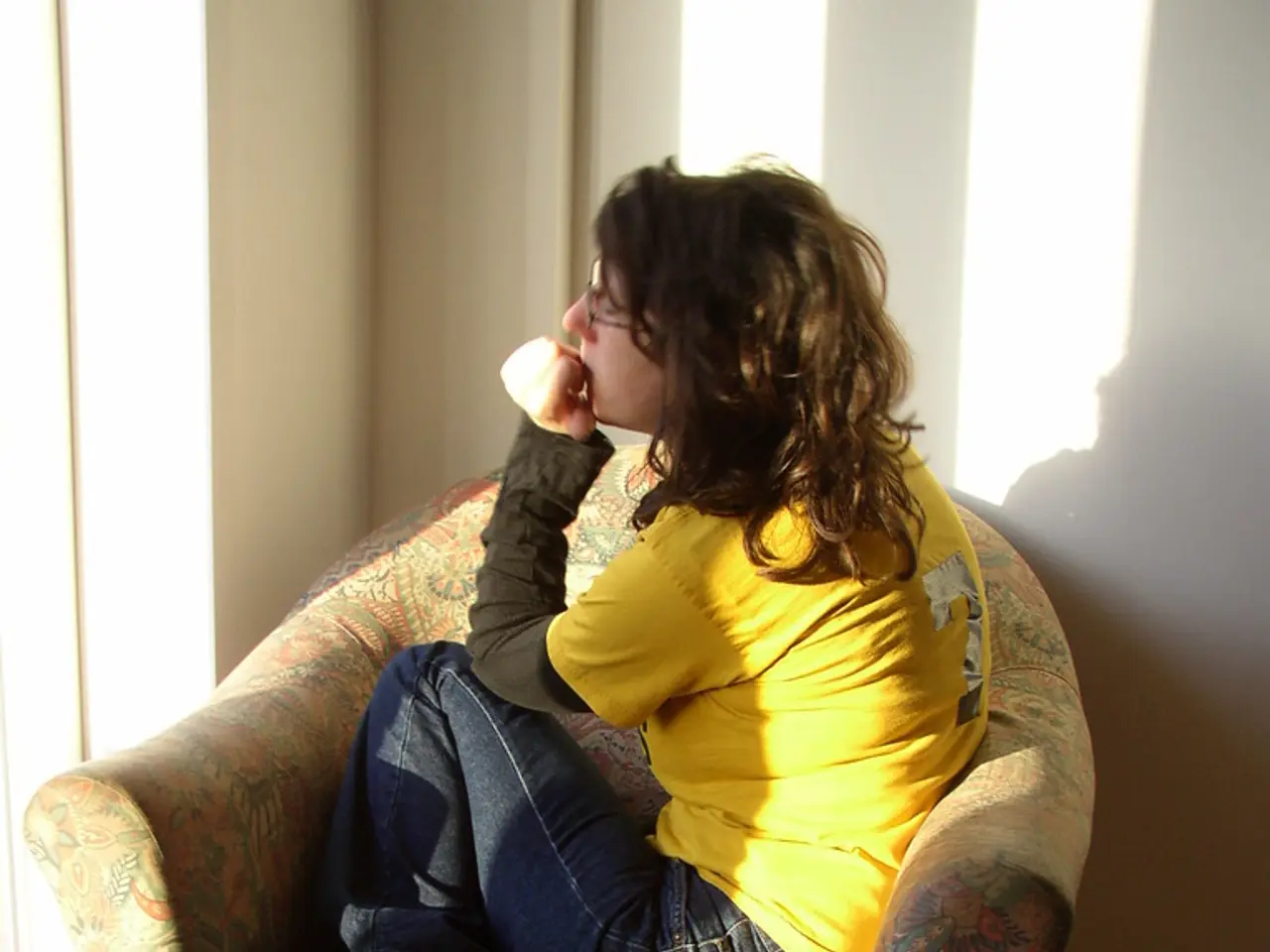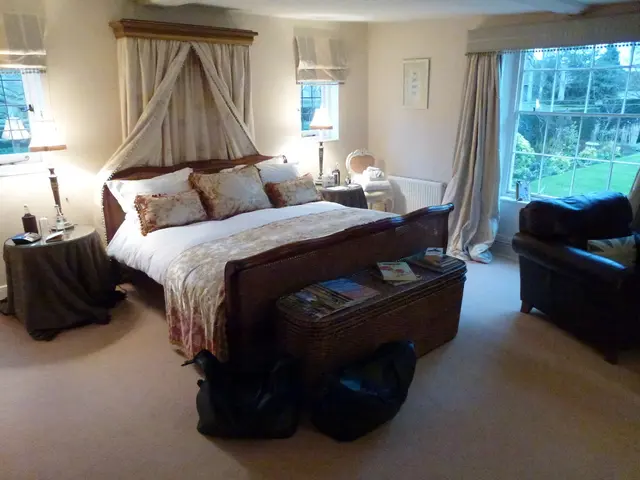Back pain in seated positions: Origins, remedies, precautions, and additional insights
Alleviating Lower Back Pain While Sitting: Tips and Common Causes
Lower back pain is a common issue affecting many adults, with approximately one in four experiencing it in a three-month period in the United States. This article will explore common causes of lower back pain while sitting, related conditions, and effective home care strategies to alleviate discomfort.
Common Causes and Related Conditions
Poor posture, prolonged inactivity, and underlying spinal conditions such as herniated discs, spinal stenosis, arthritis, or muscle strain are common causes of lower back pain while sitting. Sitting for extended periods puts pressure on the lower back, particularly if the posture is not ergonomic, leading to discomfort or pain.
Related conditions include Sciatica, herniated discs, degenerative disc disease, spinal stenosis, and Spondylolisthesis. Sciatica, caused by pressure or irritation of the sciatic nerve, results in pain radiating from the lower back down the leg. A herniated disc occurs when the inner gel-like material of a spinal disc protrudes through its outer layer, pressing on nearby nerves and causing localized and radiating pain. Degenerative disc disease is age-related wear that reduces the discs' elasticity, leading to nerve compression and chronic pain. Spinal stenosis is the narrowing of the spinal canal that compresses nerves, causing pain and possible leg symptoms. Spondylolisthesis involves a vertebra of the lower spine slipping out of place and pinching nearby nerves.
Home Care Strategies and Treatments
To manage lower back pain from sitting, it's essential to make ergonomic adjustments, take frequent movement breaks, and employ symptom-relieving therapies. Using a supportive chair, adjustable desk, and proper sitting posture can help reduce strain. Standing up, stretching, and walking briefly every 30-60 minutes can relieve pressure and improve circulation.
Heat and ice therapy can also be beneficial. Applying heat to relax muscles and improve blood flow or ice to reduce inflammation and numb pain, depending on symptom type, can help alleviate lower back pain. Over-the-counter pain medications such as acetaminophen or NSAIDs can reduce pain and inflammation.
Stretching and light exercises can maintain mobility, strengthen supporting muscles, and improve posture. Physical therapy, including manual therapy, personalized exercise programs, and education, can address root causes and prevent recurrence. In more severe or persistent cases, treatments may include prescription medications, steroid injections, or surgery after medical evaluation.
Prevention and Lifestyle Changes
Preventing lower back pain involves maintaining good posture, staying active, and avoiding prolonged sitting or standing. Sitting with a straight back, feet flat on the floor, and knees slightly higher than the hips can help prevent lower back pain. People who are obese, smoke, are infrequently active, or tend to be inactive but occasionally engage in strenuous exercise are more likely to have lower back pain.
In summary, lower back pain from sitting often stems from poor posture or spinal issues, and is managed by ergonomic adjustments, regular movement, symptom-relieving therapies, and exercises. Related conditions like sciatica and herniated discs cause pain by nerve compression and may require more targeted medical treatment depending on severity and duration. Always seek medical attention if lower back pain is severe, lasting, or does not improve with stretches, exercises, and other home care techniques, or if it results from an injury.
Workplace-wellness initiatives that encourage proper sitting posture and regular workplace-wellness breaks can help alleviate lower back pain caused by sitting. Health-and-wellness programs that emphasize fitness-and-exercise, mental-health, and nutrition can contribute to lower back pain prevention and management.
Therapies-and-treatments such as physical therapy can address the root causes of lower back pain and help prevent recurrence, while skin-care regimens may help maintain overall health and wellness. For older adults, aged-related conditions like degenerative disc disease can be prevented or reduced through proper nutrition and regular exercise.
For men, men's-health concerns like prostate issues and heart disease can exacerbate lower back pain or contribute to risk factors. Women, too, face distinctive health concerns such as women's-health issues like endometriosis, which can influence lower back pain patterns.
In summary, addressing lower back pain caused by sitting requires a comprehensive approach that considers ergonomics, exercise, mental health, proper nutrition, and age- and gender-specific health concerns. By prioritizing physical and mental well-being, we can alleviate the impact of accidental falls and other conditions that may contribute to lower back pain and improve overall health and wellness.






